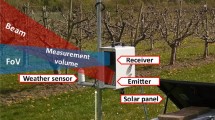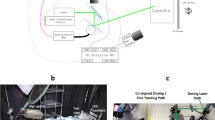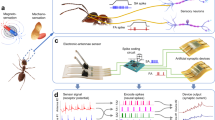Abstract
THE development of insects resistant to chemical pesticides has created a strong need for optical traps to control populations of economically important insects. But first it is necessary to understand their response to electromagnetic radiation. In 1968 preliminary tests indicated that pulsed coherent radiation of 337 µm wavelength might be attractive to insects. We have now made a behavioural and theoretical study of this phenomenon, using the fall army worm (Spodoptera frugiperda), the corn earworm (Heliothis zed), the Indian meal moth (Plodia inter-punctella) and the codling moth (Carpocapsa pomonella).
This is a preview of subscription content, access via your institution
Access options
Subscribe to this journal
Receive 51 print issues and online access
$199.00 per year
only $3.90 per issue
Buy this article
- Purchase on Springer Link
- Instant access to full article PDF
Prices may be subject to local taxes which are calculated during checkout
Similar content being viewed by others
References
Levengood, W. C., Mich. Academician, 1, 31 (1969).
Levengood, W. C., Z. Vergl. Physiol., 62, 153 (1969).
Levengood, W. C., and Eldumiati, I. I., US Dept. Agric. Rep. (1970).
Kiely, D. G., Dielectric Aerials, 92 (Wiley, New York, 1953).
Callahan, P. S., Appl. Optics, 7, No. 8, 1425 (1968).
Thourell, L., The Antenna, 176 (Chapman and Hall, London, 1960).
Author information
Authors and Affiliations
Rights and permissions
About this article
Cite this article
ELDUMIATI, I., LEVENGOOD, W. Submillimetre Wave Sensing of Nocturnal Moths. Nature 233, 283–284 (1971). https://doi.org/10.1038/233283a0
Received:
Revised:
Issue Date:
DOI: https://doi.org/10.1038/233283a0
This article is cited by
Comments
By submitting a comment you agree to abide by our Terms and Community Guidelines. If you find something abusive or that does not comply with our terms or guidelines please flag it as inappropriate.



